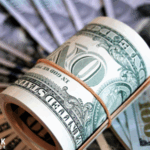The recent uptick in mortgage rates has raised questions as the Federal Reserve executed its first interest rate cut in nearly a year. Buyers find themselves grappling with uncertainties as rates climb, highlighting the complex calculus behind borrowing costs. Despite a reduction that was expected to ease lending, the rates instead climbed, emphasizing the influence of various market forces. This development brings with it potential economic impacts that extend beyond just the real estate sector.
Previously, there was an observed effect where adjustments by the Federal Reserve typically eased mortgage rates. However, recent market dynamics have shown that these rates are also heavily dependent on broader economic signals such as the 10-year Treasury yield and mortgage-backed securities’ pricing. Historically, such patterns have been inconsistent, sometimes defying conventional economic predictions. The current trend indicates a divergence from expected outcomes following such central bank interventions.
Why Are Mortgage Rates Rising?
Mortgage rates on a 30-year fixed-rate loan have increased to 6.34%, up from 6.3% the previous week, according to Freddie Mac’s Primary Mortgage Market Survey. While the Federal Reserve’s recent rate cut was anticipated to lower borrowing costs, factors like 10-year Treasury yields and market sentiments around mortgage-backed securities have contributed to the rise. These elements react rapidly to economic data and investor expectations.
What Factors Influence These Rates?
Several elements can shape mortgage rates, including inflation, government policies, and even global events. Borrowers’ credit scores, down payments, and debt-to-income ratios also play a role, making each rate unique to the individual. Each of these components can fluctuate due to varying economic conditions.
The recent rate cut by the Federal Open Market Committee marked a shift since December 2024. Despite this, Federal Reserve Chair Jerome Powell signaled that future decisions will rely heavily on economic data, without a clear path for additional cuts. This cautious approach fuelled market adjustments, contributing to the increased Treasury yields.
Investors had anticipated more definitive guidance regarding potential future cuts, causing market shifts. “The gap between those expectations and the Fed’s cautious messaging pushed the 10-year Treasury yield, and with it, mortgage rates, higher,” Senior Economic Research Analyst Hannah Jones noted.
Before the Fed’s announcement, the anticipation of the rate cut had caused Treasury yields to temporarily decrease, briefly lowering mortgage rates. With no further easing signaled, markets quickly recalibrated, causing 10-year yields to rise once more.
Realtor.com senior economist Jiayi Xu mentioned market stability: “Rates are expected to stay in a tight range as markets weigh the implications of the government shutdown.”
Analyzing these developments reveals the intricate tapestry of economic influencers at play. Understanding the full spectrum that affects mortgage rates can offer insights into broader economic behaviors. Those considering real estate investments may want to closely follow these market signals and adjust their expectations accordingly.









